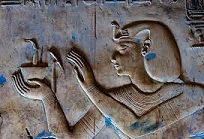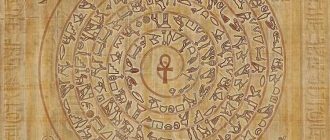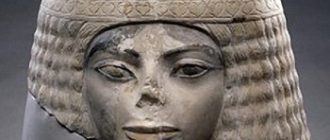Want to buy an Egyptian relief sculpture? Read on for facts and info on the ancient art of making Egyptian relief sculptures practiced in Egypt since the third dynasty…
Relief sculpture was a prominent part of ancient Egyptian traditions. They would make use of relief sculpture to decorate the walls of the tombs, temples and other important structures. They believed that decorating the tomb with relief sculptures ensured a blissful eternal afterlife. When used inside a temple the relief sculptures were believed to have magical powers that helped in performing important religious ceremonies and also served as a commemoration of royal deeds conducted in the Temple.
The oldest known Egyptian relief sculptures belong to the third dynasty. One of the most popular sites is the Hesire at Saqqarah. A large collection of mural paintings depicting funerary was found at this location. Furthermore the site also had strangely fine quality low relief sculptures carved out of wood panels. Initially the structure mud brick walls or walls of poor quality stone. At this point in time all mural decoration was made using paint. It wasn’t until good stones were added to the structure that the Egyptians engaged in making relief sculptures.
A large majority of mural decorations and relief sculptures that are found inside tombs have been left partially unfinished by the time the burial ceremony was completed. This has in fact given historians great clues about the techniques and methods employed by the Egyptians for laying out their wall decorations. When the wall was prepared red marking guidelines would be used in order to draw a grid. These grids would be useful in drawing out large sized human figures although they were also used for smaller items as well. The preliminary outlines were corrected first following which the paint was applied using mineral-based pigments and tempera.
Popularity and Perfection of Egyptian Relief Sculptures
It was however in the dynasty of old Kingdom that the art of Egyptian relief sculptures was perfected. Great examples of relief sculpture from the fourth dynasty can be found in tomb of Nefermaat and Atet situated at Maydam. The relief sculptures show detailed scenery featuring a group of geese. Low relief work was particularly popular in the old Kingdom and was the mural decoration of choice when it came to Royal funerary monuments. The trend continued up to the fifth and sixth dynasties during which relief work was being featured on private tombs as well.
Some of the most outstanding Egyptian relief sculptures are to be found in the sun temple of King Neuserre situated at Abu Jirab. The tombs of Ptahhotep and Ti at the site of Saqqarah also have a wide variety of Egyptian relief sculptures depicting scenes from the everyday life of the locals. The art of making relief sculptures continued hand-in-hand with the practice of painting. These two artistic mediums would always accompany each other in tombs and temple of the third Dynasty onwards.
Today many great examples of this ancient art form can be seen in museums across the world. Egyptian relief sculptures are also sought after by individuals that have a fascination for ancient Egyptian style and art work.





